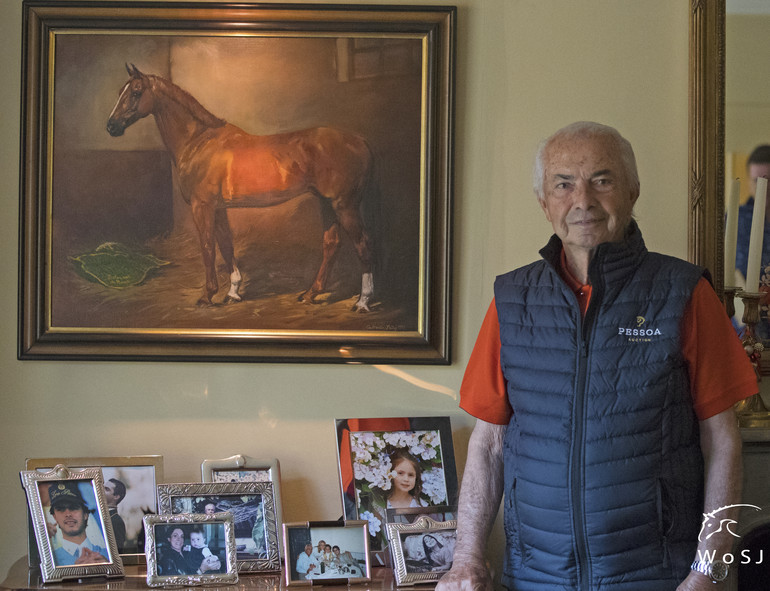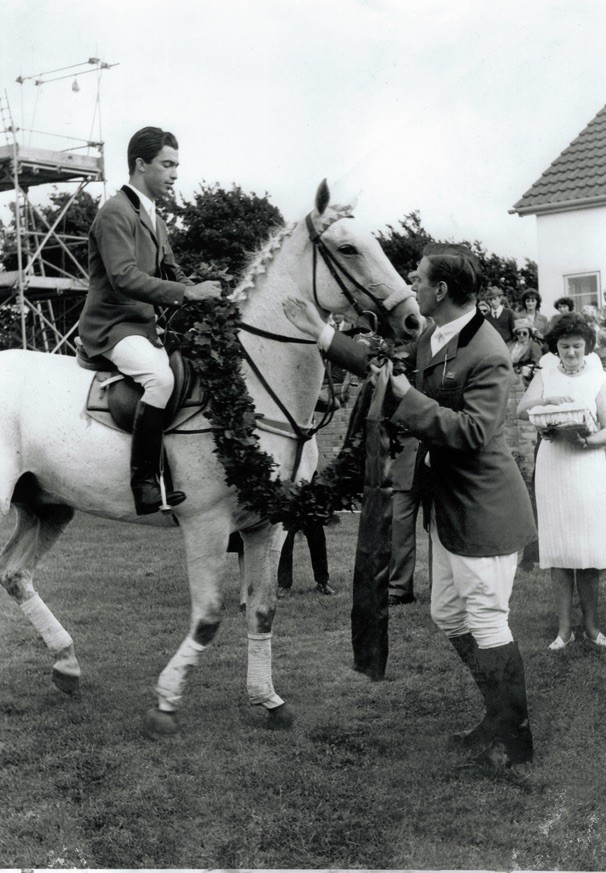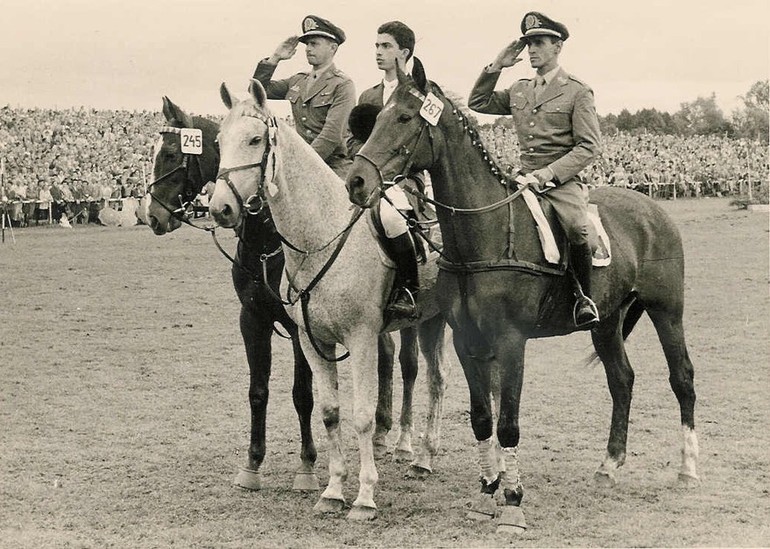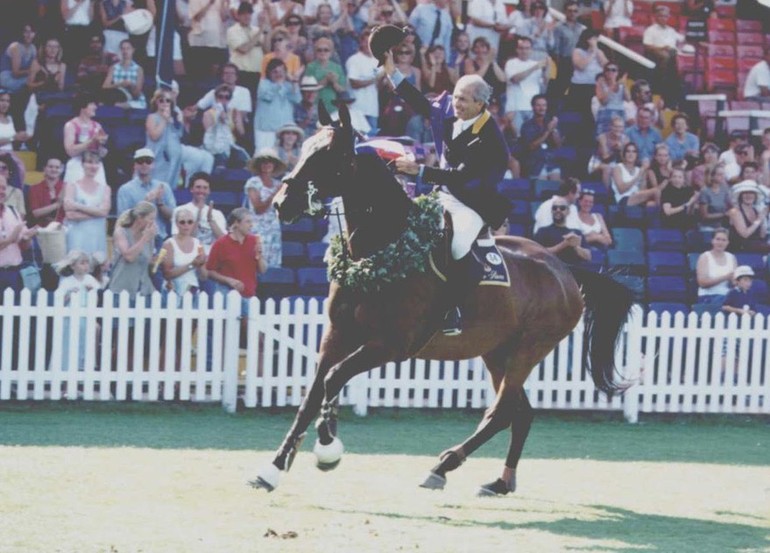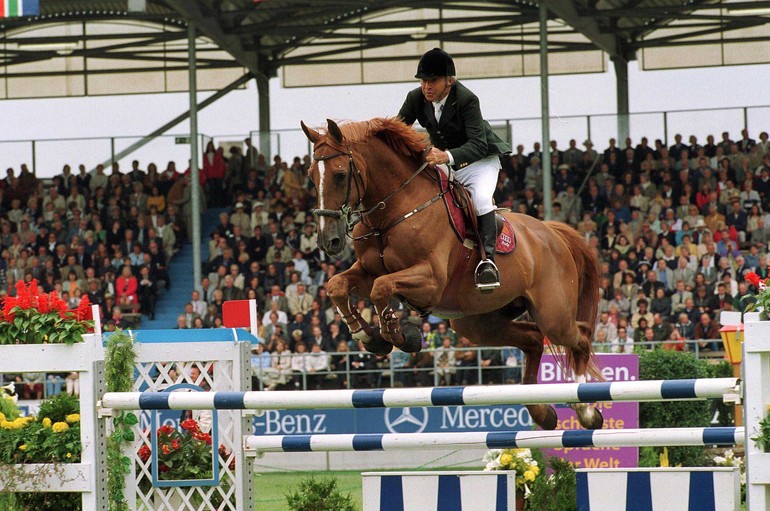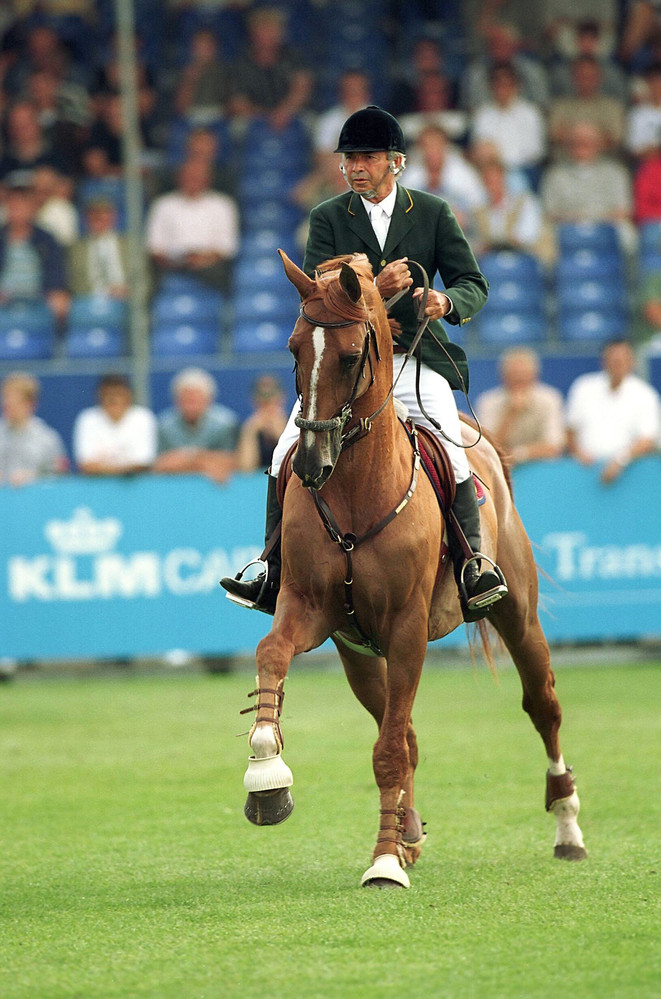Text © World of Showjumping
He’s soon 85 but shows no signs of slowing down. In August, he launched the Pessoa Auction and when this project reached its conclusion back in September there were other ones waiting. After somewhat reluctantly finding new homes for his beloved horses, Nelson ‘Neco’ Pessoa is ready to turn his full attention to coaching – with plans of innovative ways to make sure his legacy lives on. With the Olympic Games in Tokyo also on his agenda for 2021, as High-Performance Jumping Coach for the Australian eventing team, there is very little in Neco’s life suggesting that he is approaching his mid-eighties.
Divided over three chapters, Neco – also known as The Wizard – takes us with on his life journey and shares his experiences from an equestrian adventure that began just after World War II and which continues to this day.
If you missed chapter one, you can read it here.
The genius Gran Geste
“My first season in Europe was good, but the second one was better. In 1961, with Gran Geste, I won the Grand Prix of Brussels against Winkler, D’Inzeo and Schockemöhle. The next year, with Espartaco, I won the Hamburg Derby for the first time. This was a very important competition back then, that everybody wanted to win. The year after, in 1963, I repeated the win, and also won the Hickstead Derby. My horses began jumping really good, and I won classes left and right,” Neco recalls.
“At this stage, I started to import South American bred horses to Europe as they were in demand after their success. Every year I brought in six horses from Argentina and Brazil to develop and sell, a business I structured next to training the French lady. I also brought two boys from Brazil to ride for me, and that’s how it all began,” Neco tells about the early days of the Pessoa-empire.
“In 1964, I did the Olympics in Tokyo and finished fifth with Huipil. That same year I won the Grand Prix of Aachen with Gran Geste, and in 1965 I won Hamburg and Hickstead again and suddenly I was part of the elite group of riders in Europe. Come 1966, we had the European Championships in Lucerne and I won with Gran Geste. It was my godfather that had found Gran Geste for me in Brazil. During the nine years I competed with him, Gran Geste won 44 Grand Prix classes. While he was very difficult in the beginning, he was also brave, hard, healthy as well as very versatile. He won Grand Prix classes, derbies and puissance competitions – everything. Gran Geste would be a top horse in today’s sport as well, he was a genius!” Neco tells with sparkling eyes. “In 1967, I went to the Pan-Am Games in Winnipeg, Canada with him and won gold with the team and silver individually. Two of the riders on the team – Antonio Alegria Simoes and Jose Reynoso Fernandes – were the boys I had brought to Switzerland a few years earlier,” Neco tells.
After Gran Geste won the Hamburg Derby for a third time in 1968, changes were on the horizon for Neco. “The horses I had been successful with during my first eight years in Europe were all getting older, and it was time to retire them,” Neco tells. “At this point, the French lady I had been training had stopped riding. There was no longer a reason for me to stay in Switzerland. I had made many French friends, so I decided to relocate to Chantilly and rented stables there. At this point I had no horses, but through my contacts I got new ones to ride. I brought back several horses that for various reasons had disappeared from the circuit, much thanks to my fantastic groom Jean who was a multi-tasking man that functioned as everything from farrier to rider. I started to re-build a good group of horses, and it was during this time I got the nickname ‘Le Sorcier’ or ‘The Wizard’. In 1972, I took my second victory in the Grand Prix of Aachen – with Nagir. He was a very complicated thoroughbred that was highly inconsistent. Back then, the jumping competitions in Aachen ran over nine days and Nagir had competed nearly every day without a single clear round. On Sunday however, he was the only horse that was double clear. He was probably so tired that all his tension was gone,” Neco laughs.
The adventure continued, Neco would go on to make history – winning the Hamburg Derby three more times – in 1992, 1993 and 1994, as well as the Hickstead Derby in 1996, with Vivaldi.
A derby with pulse
In the autumn of 1995, after another successful performance at the Pan American Games in Mar del Plata, Argentina – where Neco, 59, and his son Rodrigo, then 22, had helped Brazil earn the team gold medal – Neco suffered a heart attack. Following doctors’ orders to rest, Neco stayed out of the saddle for the Olympic Games in Atlanta in the summer of 1996 and instead coached the Brazilian team to a bronze medal.
Neco did, however, decide to return to the 1996 Hickstead Derby together with the 19-year-old Vivaldi. “I wanted to win one more time, so I asked my doctor if it would be possible [to compete]. The answer I got was that I would be playing with fire. I was told that I should not go over a heart rate of 180. So, I put a heart monitor on and during the round I kept on looking at it to make sure it stayed below the 180. It did, and I won. That was a very special moment for me,” Neco tells.
Baloubet du Rouet – a product of patience
In the early nineties, yet another special horse entered Neco’s life: Baloubet du Rouet. The chestnut stallion came to Neco in September 1995, when he was five. “In 1993, Diego and Nicole Coutinho Pereira went to Normandy, France to find a horse and bought Baloubet du Rouet. He was three at the time. Two years later they sent him to me. Baloubet was really wild in the beginning, he had unbelievable energy – which can be explained by his breeding, he had a lot of thoroughbred- and trotter-blood in his pedigree. For the next 11 months, he never went out of the indoor ring at the stables we were at. If he did, he would go crazy with the mares and it was simply too dangerous. Sometimes we would ride him three times a day to try to get his energy level a bit under control,” Neco recalls.
“The first time I took Baloubet to a show was when he was six; I brought him with to Moorsele in Belgium. When I got there, he was just too excited. I could not even get on him. We lunged him for half-an-hour and at one point when we were changing the rein he was standing still for a few seconds, so I shouted to my groom to throw me on. I did not get off him for the next 2.5 hours,” Neco laughs. “Every show was like this. When you got on him, he would just set off and you would catch the reins 20 meters later.”
“This was the time when I had the problems with my heart, and my doctor had told me I was not allowed to jump the bigger classes,” Neco tells. “So instead, I took Baloubet to every show possible. When at a show, I was just on him the whole day; riding around, then jumped the class and stayed on after while walking and walking. He was like my taxi, bringing me everywhere on the showground. Eventually, he calmed down. When he was seven, he won the national championships in France for his age group. In 1998, he won the World Cup Final with Rodrigo and I jumped him at the World Equestrian Games in Rome. Then Rodrigo took over the reins for good, and the rest is history. They won the World Cup Final three consecutive times, and also finished on the podium in 2001, 2002 and 2003. Then in 2004, they became Olympic Champions.”
“I’m not sure that Baloubet would have become the horse he did without this dedication in his younger years,” Neco says. “He just had so much energy and power that had to be channelled. From he was five until he was seven, he needed someone at his disposal half days and someone who knew what to do with him.”
“All my horses were special to me,” Neco replies when asked if he has any favourites. “I loved all of them, one was not more valuable than the others. Of course, closest to my heart are the horses that helped me create my career – such as Relincho that I jumped at my first Olympic Games, Gran Geste, Nagir, Lianos, Special Envoy, Vivaldi – then Baloubet. They were all different, but also had some of the same characteristics. I always liked to have the horses close to the blood, close to the thoroughbreds. Back when I started, no one in the South American breeding knew the pedigree of the horses – my father would select horses based on his eye. Most of them were thoroughbreds, that came off the field at the age of five or six and began their careers at eight or nine. Hence, they were hard and tough horses – different than today as they are started up at an earlier age. Also, when breeding I always preferred a lot of blood. Today, this is even more important than before as the courses are so fast, and the horses need to be very reactive. The horses also need to be clever to be able to win, the good ones are always smart."
To be continued with a third part...
No reproduction withouth permission, copyright © World of Showjumping



